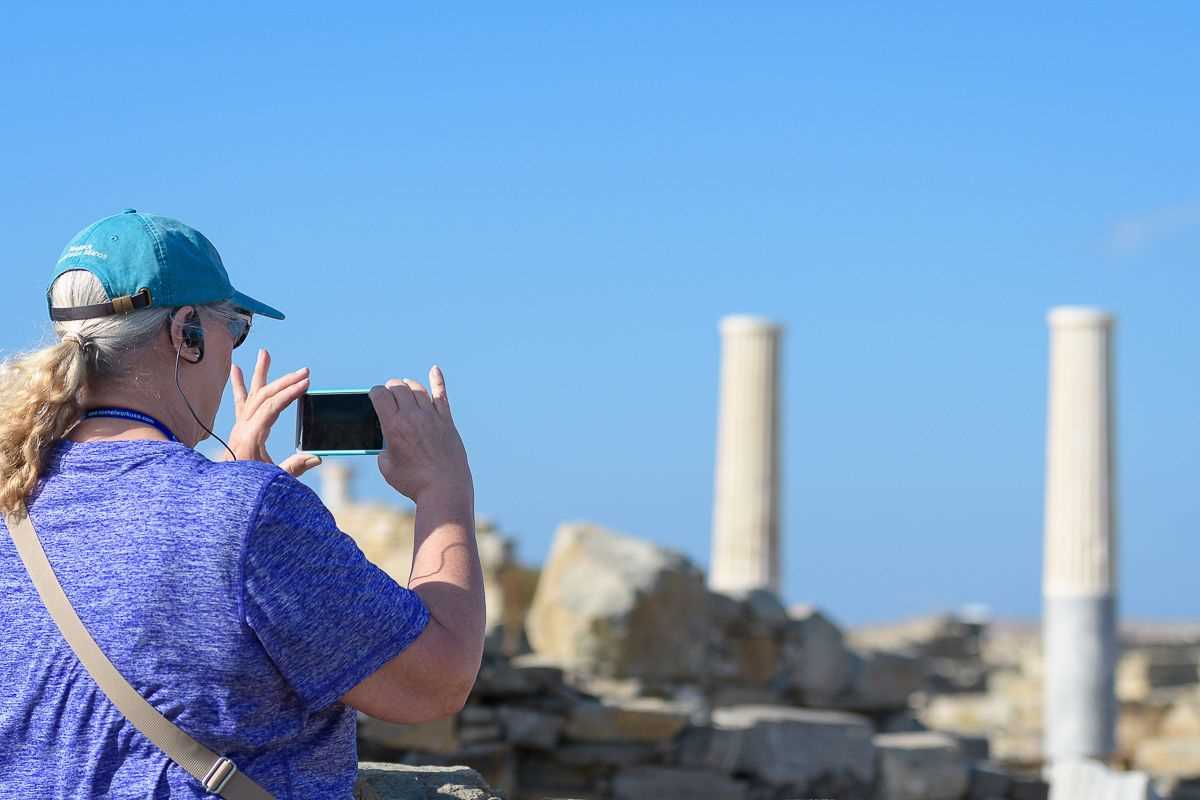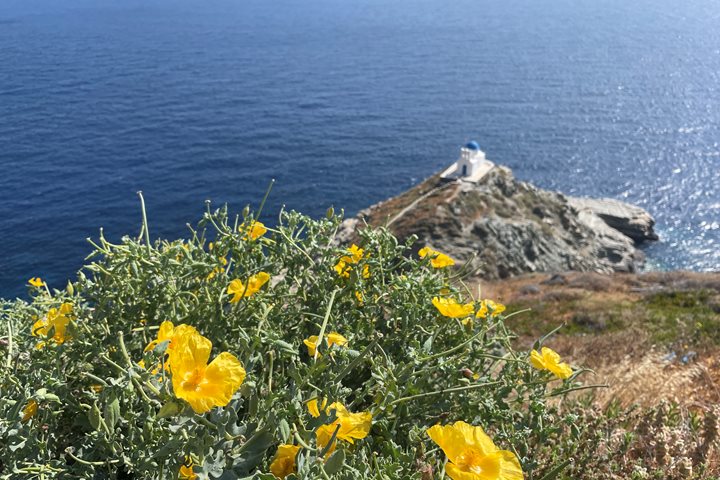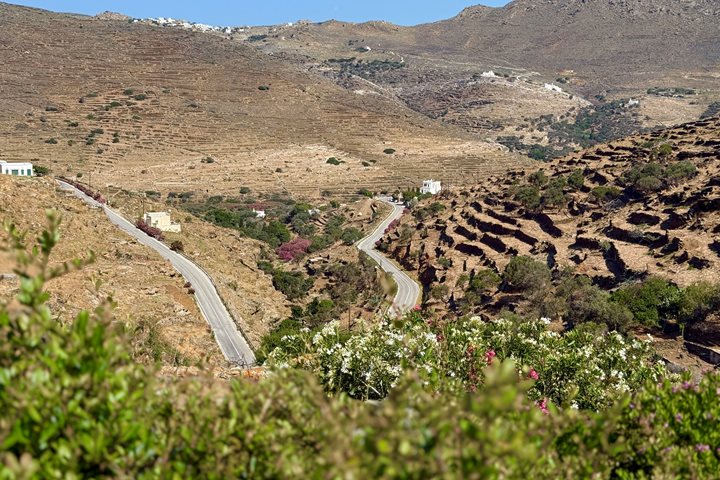Our first stop today was at the sacred island of Delos, the birthplace of the twin gods Artemis and Apollo. We began our tour in the Hellenistic-era residential district, near the ancient theater. Scattered remains, like an occasional olive press or a fishmonger’s stone table, hint at the thriving commerce that once existed on the island. This commerce resulted in wealthy merchants, whose private residences—some of the best preserved in the ancient world—were decorated with stunning mosaics and frescoed walls. We then proceeded to the Archaic-era sacred precinct, which included the fragments of the colossal kouros, meaning “sculpture of a youth”, dedicated by the Naxians. Although we could easily have spent all day exploring this fascinating archaeological island, increasing winds meant we had to return to ship before lunch. We spent a relaxing afternoon aboard Sea Cloud with photo instructor José Calvo providing an engaging discussion on photographic composition. His tips proved quite useful at our next stop, the vibrant island of Naxos. This island, unlike the other rather barren islands of the Cyclades, is famed for its agriculture, with wheat, barley, and potatoes growing on the island’s fertile plains. We walked through the Venetian Kastro (meaning “castle”) which was the capital of the Duchy of the Archipelago after the Fourth Crusade. Eleni and Kriton guided us through narrow, winding alleys, with periodic gateways surmounted by the marble coats of arms belonging to the Latin nobility. Thanks to centuries of Latin rule, Catholic churches can still be found on Naxos. After our tour some of us walked to the 6th-century B.C. marble gateway that is now the symbol of Naxos, and enjoyed another spectacular Aegean sunset.
6/18/2025
Read
Sea Cloud
Sifnos, Greece
Today’s port of call was Sifnos, a small island gem in the Cyclades. The captain took us to a nice little port, Platos Gialos. Two groups, Zeus and Apollo, went on a scenic drive to medieval Kastro. This town was built on a small hill as a castle, as the word Kastro suggests. As we walked the narrow streets, we were amazed by its charm. Cats invited us to pet them, and amazing views opened around every corner. Some of us went down to a small peninsula to see the picture-perfect Church of the Seven Martyrs while others immersed themselves in the town’s atmosphere. Our next stop was Kamares, a ferry port in a beautiful bay. We were treated to a selection of the best local food Sifnos can offer on a terrace by the beach. Photographers: Linda Burback and Ante Skracic







